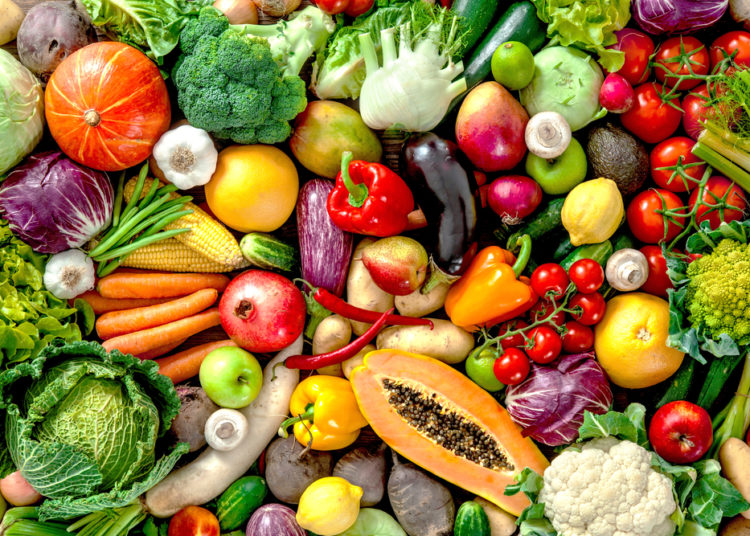If you want to improve your performance in the gym or improve your body composition, then you need to know how many calories you burn every day. Sticking to that number will help to ensure you’re maintain muscle and minimize fat gain.
Plug in your numbers below, and then we’ll explain how we came up with the final number and how you can go about putting them into action.
Calorie Calculator
Your daily calorie needs: Calories Per Day
| Goal | Calories Per Day |
|---|---|
| Maintenance | |
| Fat Loss | |
| Extreme Fat Loss |
Exercise: 15-30 minutes of elevated heart rate activity.
Intense exercise: 45-120 minutes of elevated heart rate activity.
Very intense exercise: 2+ hours of elevated heart rate activity.
Editor’s note: The content on BarBend is meant to be informative in nature, but it shouldn’t take the place of advice and/or supervision from a medical professional. The opinions and articles on this site are not intended for use as diagnosis, prevention, and/or treatment of health problems. Speak with your physician if you have any concerns.
How the Calorie Calculator Works
If you’re wondering how we took that information and turned it into an amount of energy you need, well, for starters you should know that this number is a rough estimate. It’s a very good estimate, but because we all have slight differences with regard to how we metabolize food, how much energy we require to perform certain tasks, and so on, the intention of these (very highly regarded formulas) are to give you a place to start from.
In other words, read this article, stick to your number, weigh yourself every day, and see how much your weight changes over a week or two. If your weight hasn’t changed, you’ve been eating the right amount of calories for your activity level. If your weight has changed, toggle the number as needed.
Sure, you can guess at how much food you need, but hunger isn’t always a good indicator of energy requirements, and a cavalier approach to body composition will produce less than ideal goals: less muscle and more body fat than necessary.
That’s why we came up with this nifty calorie calculator that takes your basal metabolic rate — the amount of calories your body burns at rest — and combines it with the number of calories you burn when you go about your daily routines and workouts.

Your Basal Metabolic Rate
This refers to the amount of calories your body burns doing absolutely nothing. It’s your base: it’s just the amount of calories you need to keep your organs functioning and it’s what you’d burn if you just lay in bed all day, not fidgeting, and not getting out of bed to pee. (Which we don’t recommend.)
In the calculator above, you’ve got the option of using one of two formulas to work out your BMR:
1. Mifflin St. Jeor
If you hit “no” when asked if you know what your body fat percentage is, then you used Mifflin St. Jeor. That formula looks like this:
Here, s is +5 for males and -161 for females.
Of the two formulas people use to work out their BMR without their body fat (this one and Harris Benedict), Mifflin St Jeor is considered a little more accurate.(1)
2. Katch-McArdle
If you did know your body fat percentage, we used Katch-McArdle, which looks like this:
Here, ℓ represents your lean body mass, or your total weight minus the weight taken up by your body fat.
Sometimes called the Cunningham formula, this is considered by many to be the most accurate way to work out your BMR, but only if you actually know your body fat percentage — as in, you’ve had it tested with a DEXA scan in a lab.(2) If you can only guesstimate your body fat, it’s best to click ‘no’ in the calculator and get your Mifflin St Jeor number.

Your Daily Energy Expenditure
This is why you’ve been asked to input a rough estimation of your daily activity level. The amount that each option — sedentary, intense daily exercise, and so on — adds to your calorie burn depends on factors like your height, age, and weight. Daily intense exercise could burn an extra 500 calories for a 185-pound man or 300 calories for a lighter woman.
Once again, these numbers are a rough estimate. Ticking “I exercise 4 to 5 times a week” is very helpful, but some people exercise thirty minutes at a time, others do so for two hours. Some exercise with strength training — short bouts of lifting with long rest periods — while others run hard, which burns far more calories.
This isn’t even taking into account the fact that people who have a habit of fidgeting can burn hundreds more calories every day than non-fidgeters.(3)
So, again, try to weigh yourself every morning for a week or two, after you wake up, to get a good handle on how much your calories are affecting your weight.

How to Track Calories
It can be daunting to look at a number of calories and task yourself with turning that number into a meal plan.
The best way to figure this out is to get your hands on the following:
Apps
The standard way to go about tracking your calories is to
1. Get an app with a vast registry of the calorie composition of both whole and processed foods. Our favorite is CalorieKing, with MyFitnessPal a close second. You can also visit their websites on your computer.
2. Get an app that helps you track calories. This will be a program into which you can plug everything you’ve eaten and its calorie content, and you’ll get totals at the end of the day and the end of the week.
A good app will also save your commonly eaten meals and even store recipes, so you can just click on “That Great Bolognese I Make” and the calories will appear Tuesday after Tuesday. (Or whenever pasta night is.)
MyFitnessPal is also good at this, My Macros+ is our favorite app.
[Related: Work out the best amount of protein, carbs, and fat you should eat with our macros calculator]

A Food Scale
You can pick up a small, pocket-sized food scale online and you’ll soon find it to be a godsend when it comes to figuring out how much you’re eating. Recording the nutrition label or weighing everything you eat might sound mind numbing, but it’s something that’s worth doing for about a month. Why?
Faith In Your Ability
You don’t need to weigh every thing, every day, for the rest of your life. People who have tracked calories for a while typically agree that after a month or two of doing so, you’ll develop the skill of estimating your calorie intake. It’s not accurate to the milligram, but it’s enough for many to happily manage their weight on their own.
So if your goal is managing your weight and body composition, put in some work and track your food for a brief period, perhaps returning to tracking for a few weeks every year, so you can be more mindful of your food intake for the rest of your life. Just make sure you speak to a doctor before making any dramatic changes to your diet regimen.
Featured image via Prostock-studio/Shutterstock
Frequently Asked Questions
How many calories should I eat to lose weight?
The most common way to lose weight is at the rate of one pound a week. That’s the rough equivalent of 3,500 calories, so your task is to find out how many calories you burn in a day, then eat 500 less than that every day.
How many calories do I burn in a day?
You can use this calculator to work out how many calories you burn — we combine your Basal Metabolic Rate (BMR, the amount of calories you burn at rest) and the amount of calories you burn from daily exercise. We’re able to figure out these numbers based on advanced formulas that take into account your height, weight, and age.
How many calories should I eat to gain muscle?
Building muscle takes a long time, and generally, it’s smart to just eat on average one or two hundred calories more than you burn in a day. Some people prefer to cycle their calories, eating five hundred more on workout days and eating only at maintenance on rest days. So long as you have eaten about 1,000 calories over your maintenance calories at the end of the week, it might be beneficial to put your surplus on your workout days.
References
1. Frankenfield D, et al. Comparison of predictive equations for resting metabolic rate in healthy nonobese and obese adults: a systematic review. J Am Diet Assoc. 2005 May;105(5):775-89.
2. Zanella PB, et al. Estimating Resting Energy Expenditure by Different Methods as Compared With Indirect Calorimetry for Patients With Pulmonary Hypertension. Nutr Clin Pract. 2018 Apr;33(2):217-223.
3. Koepp GA, et al. Chair-based fidgeting and energy expenditure. BMJ Open Sport Exerc Med. 2016 Sep 1;2(1):e000152.

